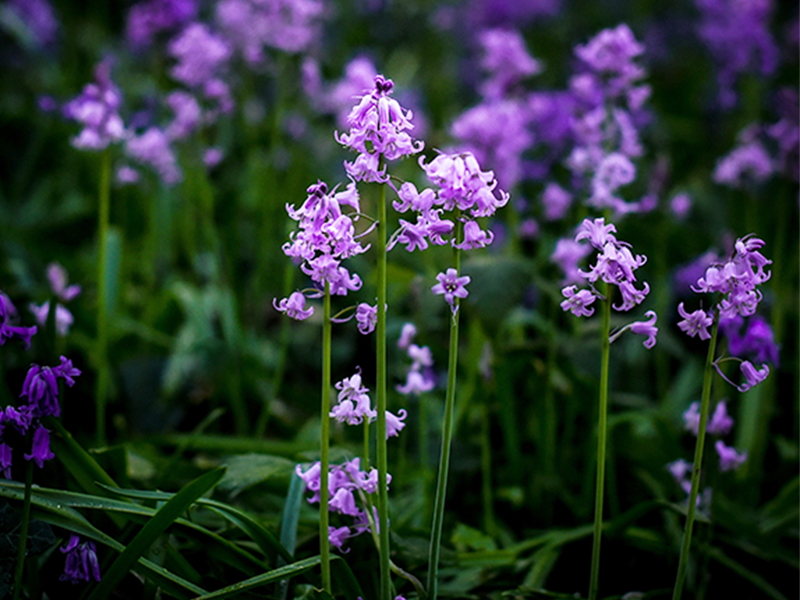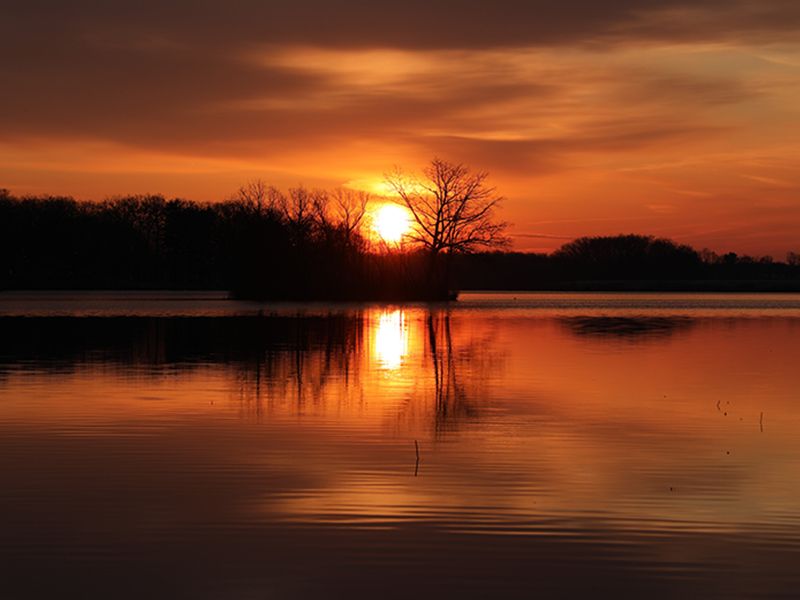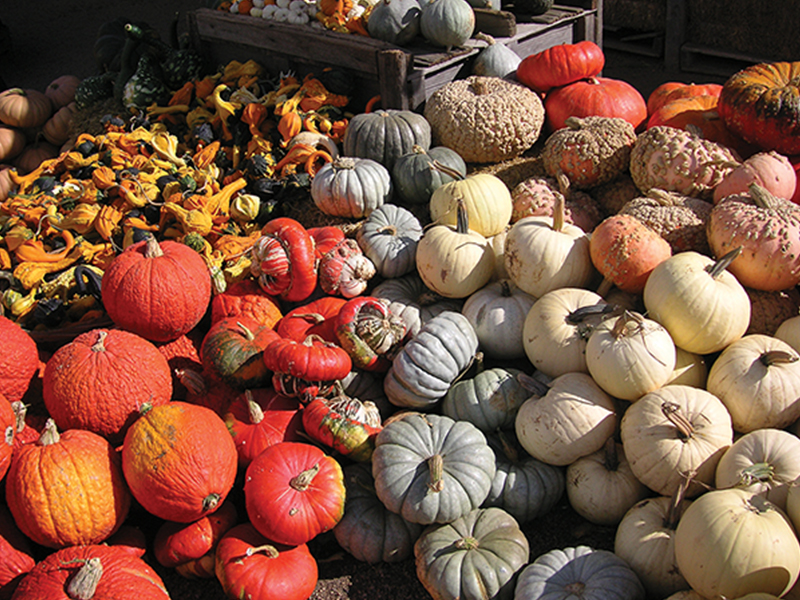Lughnasadh is the third cross-quarter Gaelic seasonal festival. Also called Lammas, the festival is a celebration of the First Fruits of the harvest season. It is named for Lugh, a Hero who initiates agriculture. We will explore the idea that Linear Time arises with the advent of agriculture.
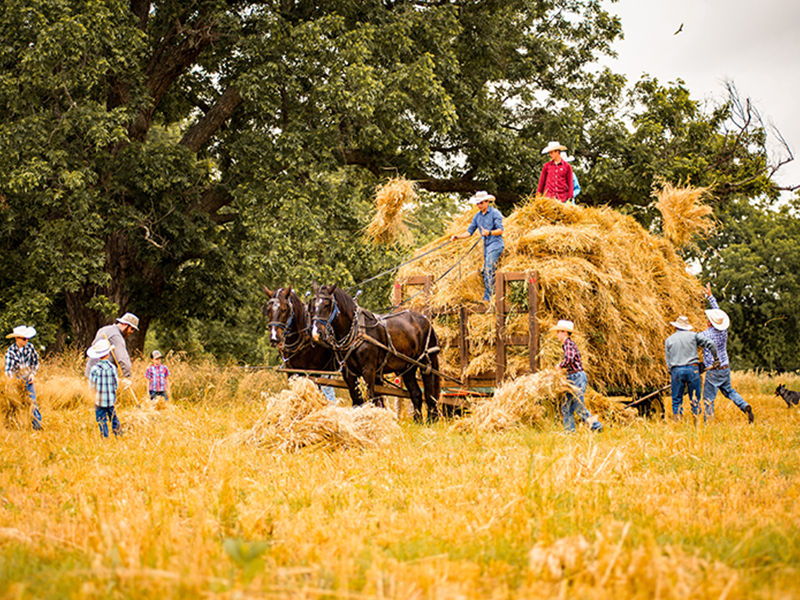
Harvest Hay Wagon. Photo by David Holifield on Unsplash.
Time not only circles in Sun and Moon cycles, but in seconds, minutes, hours, days, weeks, months, years. Linear time is the idea it can be measured, divided into sections and “dated”. History is strung along Linear Time, with sections of the line measured exactly, and events occurring at specific points on the dateline. Did linear began with the idea that you can settle, grow food and preserve it against the non-growing seasons, sell it for money? People working the land thought of it as theirs; they knew the date they bought or settled there. As hunter-gatherers, nomads, we traveled with the seasons, following the animals’ migrations, who in turn followed the availability of plants whose growing time was dependent on the tilt of the earth to the Sun. Wihakakta Ce Papi Wi: Moon of Greening Grass. Canwapegi Wi: Moon of dying grass. In agricultural communities the Festivals became associated with specific dates. And so in the northern year we come to August and Lughnasadh, the festival of first fruits (in February in the southern hemisphere). Seedtime, followed by new growth, full growth, has come to Harvest.
In Lughnasadh (Lammas) the first grain, hay and fruit harvests begin. Linear time will move on into the full harvest festivals autumn will bring, but this is the time when holy first fruits are sacrificed with ritual cutting to give thanks and to set aside to insure the next Seedtime. We still say “Don’t want to touch our Seed Corn” when things are a little tight financially. Loaves are made from the first ripe grain, and lifted up for a blessing. Seed rich dolls are woven from stalks heavy with grain and hung in the house, dry and protected from the coming weather. They are back-up Seed if all else is lost to rot, mice or frost. Here is a link to many pictures of harvest corn dolls and how to make them.
The harvest season, golden as it begins,
Then deepens into darkness, until the
Cold nights chill the days into winter.
Lugh, Hero of Harvest
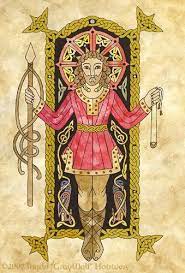 The word Lughnasadh carries the name of the god Lugh or LLeu or Lugas, and in Wales is similar to Lleu Llaw Gyffes. The storyline is kin to Jesus’, Prometheus’ and Raven’s. Lugh’s personal energy is compared to both Apollo and Hermes (Mercury). His foster mother, Taitiu, clears the forests to make room for planting crops, and dies in the effort. Lugh holds funeral games in her honor. These games become Lughnasadh, and are celebrated by “ritual athletic and sporting contests, horse racing, music, storytelling, trading, proclaiming laws and settling legal disputes, drawing-up contracts, and matchmaking.” Part of the festival often involves taking the first fruits as a thanksgiving, and burying them at the top of a nearby mountain, returning the gift to the earth, perhaps to Taitiu. In many countries people still hike to a nearby high place and bury a sheaf of grain or a handful of bread, and pour a little wine or grape juice. On the last Sunday of July thousands of pilgrims climb Corag Patrick. This is the traditional beginning date of Lughnasadah, though the event is Roman Catholic now and focused on penance rather than a first fruits celebration.
The word Lughnasadh carries the name of the god Lugh or LLeu or Lugas, and in Wales is similar to Lleu Llaw Gyffes. The storyline is kin to Jesus’, Prometheus’ and Raven’s. Lugh’s personal energy is compared to both Apollo and Hermes (Mercury). His foster mother, Taitiu, clears the forests to make room for planting crops, and dies in the effort. Lugh holds funeral games in her honor. These games become Lughnasadh, and are celebrated by “ritual athletic and sporting contests, horse racing, music, storytelling, trading, proclaiming laws and settling legal disputes, drawing-up contracts, and matchmaking.” Part of the festival often involves taking the first fruits as a thanksgiving, and burying them at the top of a nearby mountain, returning the gift to the earth, perhaps to Taitiu. In many countries people still hike to a nearby high place and bury a sheaf of grain or a handful of bread, and pour a little wine or grape juice. On the last Sunday of July thousands of pilgrims climb Corag Patrick. This is the traditional beginning date of Lughnasadah, though the event is Roman Catholic now and focused on penance rather than a first fruits celebration.
Lugh is a Hero born of a political alliance marriage: he is both king and craft master, a warrior and a sacrifice. Lugh’s son Cú Chulainn is a similar hero. Lugh’s ancestry is complex, and his birth has different stories, some of which reflect historical figures. Lugh’s grandfather Balor fears an Oedipus-like prophecy of death by a grandson. He imprisons his daughter Eithne in a tower where twelve maidens (possibly astrological signs) tend her. But the grandfather steals a magic cow, and his enemy has Biróg, a Sidhé woman, transport him to the tower where he seduces Balor’s daughter (a Rapunzel variation). Lugh and two siblings are born. Their grandfather Balor has them thrown in the harbor to die and Biróg saves only Lugh. The three siblings are one of the triplets patterns scattered throughout the story.
Lugh does kill his grandfather at the Second Battle of Mag, leading the Tuatha Dé Danann against the Formorians (his parents’ alliance apparently having failed).
Lugh persuades the earth spirits (Formorians) to give up the fruits of the earth for the use of human beings, and teach them the times and methods of plowing, seeding, growing and harvest.
The boughs do shake and the bells do ring,
So merrily comes our harvest in.
We’ve ploughed, we’ve sowed,
We’ve reaped, we’ve mowed,
We’ve got our harvest in.
Here’s a health unto our Master,
The Founder of the feast.
– Traditional Harvest Song
Lugh’s Rituals ensure a successful harvest. He invents horse races, a kind of chess, and ball games. All these things are part of a harvest fair that brings together scattered households and reinforces tribal identity. In our time county and state fairs, as well as Labor Day and many other local harvest festivals are loved. If we follow his storyline through Linear Time, all these joys are gifts from Lugh.
Cities and Caste
In time agricultural societies often embraced a class system, with those who worked the land at the bottom of the hierarchy. In Imperial Rome, new foods grown by the conquered were brought to entice jaded palates of the rich while slaves starved. In feudal times a Lord and Lady in a castle might be eating both meat and sweet while their serfs ate bread and gruel. Slaves in the early United States ate different foods than their owners. Even while things change, some things stay the same. The same caste system exists today. Those who now live in the bounty eat produce grown around the world, while the poor die for lack of good food and clean water.
City dwellers often reduce the seasons to heat and cold, dry or wet. Many living in cities have no idea where their food comes from. Circular and Linear time mark their days digitally. Soon many will not know, and perhaps not care, that the food they eat is neither animal nor plant but manufactured from microscopic organisms, untouched or blessed by human hands. Family farms struggle as vast factory farms are being automated so robots seed, grow and harvest. The opportunity is there to experience seasons in yards, patio or balcony potted gardens, community gardens or parks, Botanical Gardens. Rising temperatures are forcing builders into new models; perhaps, like the ancient Mayan and Asian cities, new cities will look more like a wagon wheel with the farmlands and gardens interspersed.
Lammasaghel – Harvest Drink
This traditional drink is served on the first feast day of Lammastide. It is brew of ale, nutmeg sugar and toasted crabapples. It is a cousin to Wassail.
How to Celebrate Lughnasadh
What can be done by a single person? Find and support local farmers. Pay attention to what is in your food. Give thanks for its journey to your hand. If, where you live, you plant and nurture a seed to harvest it is a healing gift to the natural world. Take time to know the nearest tree, send it an emotional greeting of love and honor as you walk by. Notice a flower, and give thanks for its journey to you from the Cretaceous period of Linear Time. Work to heal the earth – find ways to know about the many efforts being undertaken by many thousands of people everywhere on the planet. Choose one effort to support, maybe your local Botanic Gardens, or Arbor Day Foundation, or a local farmer, or… a cornucopia of possibilities.
Lady of the Green Forest, Lord of the Golden Harvest
The circle turns to your honor time.
This creation holds all that we have or need.
May this harvest nourish all who hunger.
We climb the mountains of sorrow and fear
To compost the ways of destruction and death.
We nourish you as you have nourished us.
We bring you our first fruits of a new time.
What early harvest festivals do you keep or remember keeping as a child?
What relationship do you have or want to have with the agricultural seasons?
How do you honor this planet?

